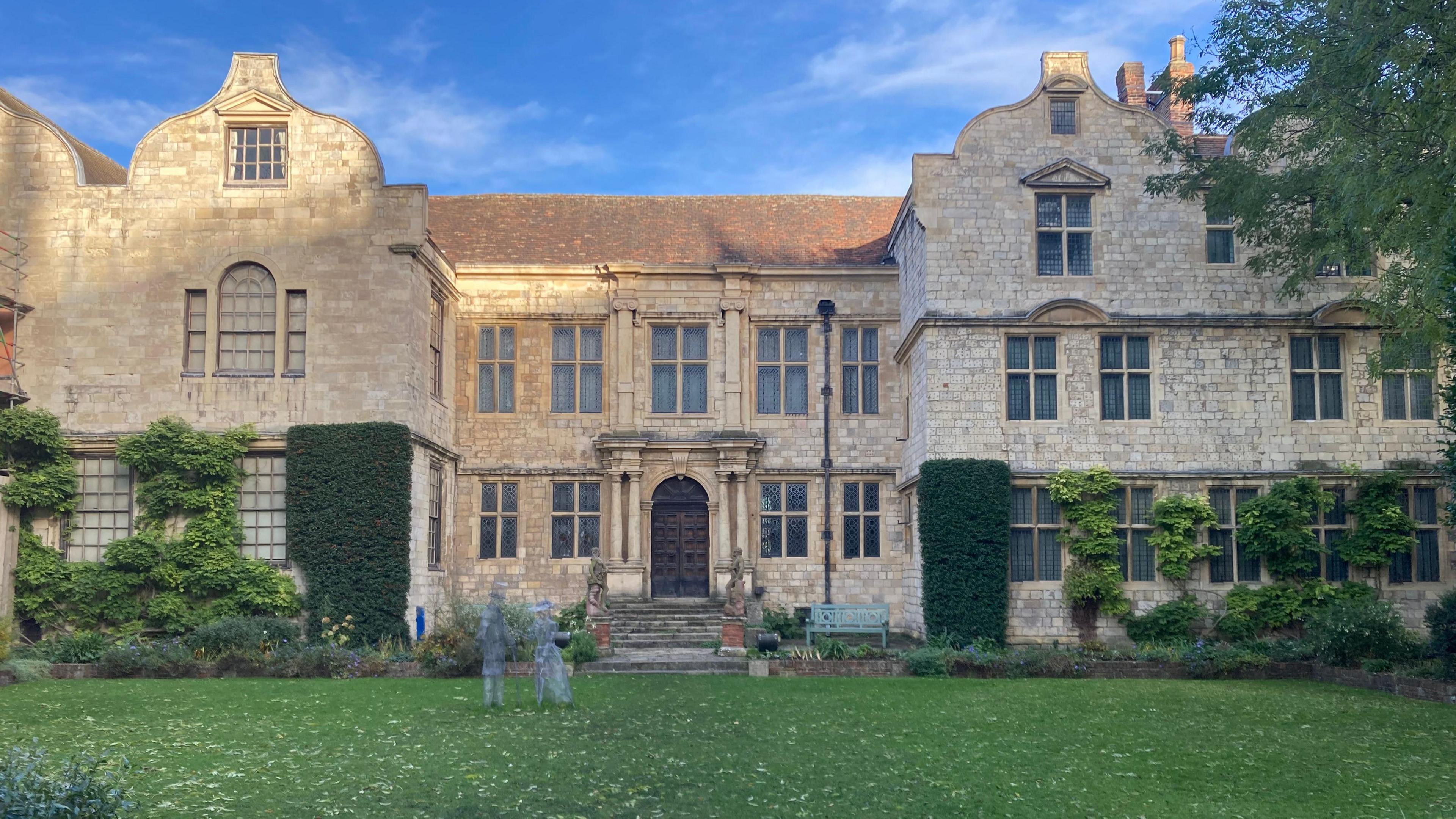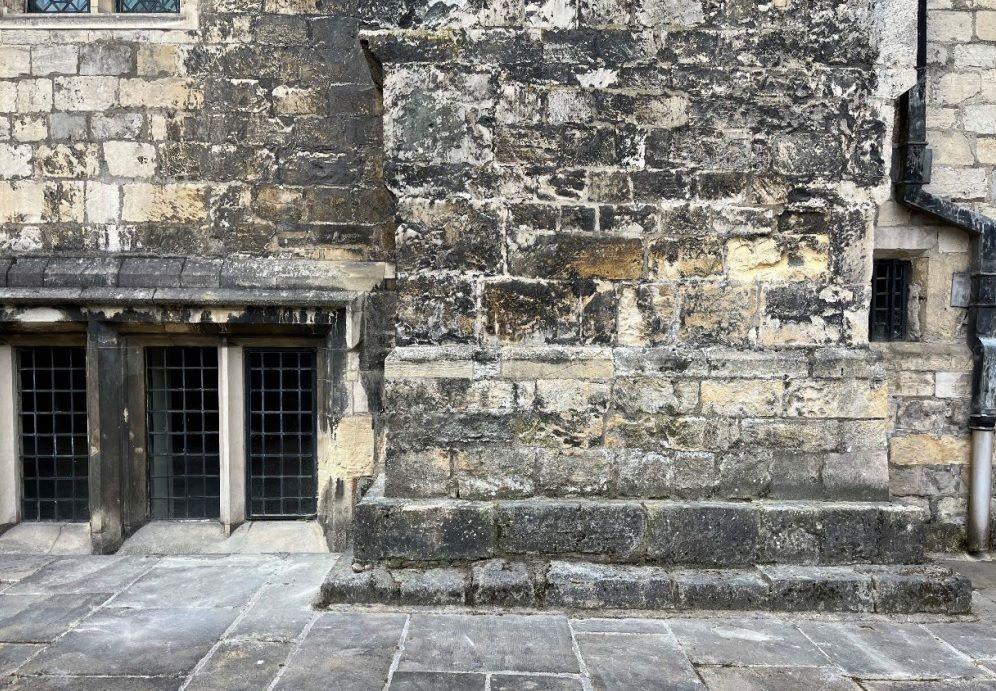Repair plan aims to cut risk of falling masonry

Planning documents have warned of the potential for falling masonry to injure people
- Published
Parts of a listed building could collapse unless repair work takes place, The National Trust has warned.
The organisation plans for the Treasurer's House in York include dismantling and reconstructing part of the Grade I-listed building's lift shaft.
Planning documents lodged with the City of York Council warn of a risk falling masonry could injure people below because of the poor condition of the upper section of the shaft.
The property was built in the early 17th Century but parts of the site date back to medieval times, with some surviving Roman fragments in the cellar.
Plans lodged with York Council for the building in Minster Yard come after inspections which take place at the building every five years.
Those found loose bricks and a bulge in the brickwork at the top of the redundant lift shaft, on the side facing Gray’s Court.
Plants were also found growing on the side of the shaft.

Black sulphate on the stonework of Treasurer's House would also be removed
According to the Local Democracy Reporting Service, repair work would involve the upper section of the shaft being dismantled and the removal of the roof.
“Due to the poor condition of the upper section of the lift shaft, there is a risk of collapse, with the attendant risk to people from falling masonry and damage to the historic building," the plans state.
“This work is therefore essential to address health and safety concerns.”
Replacing eroded brickwork, reinforcing parts of the building where there has been cracking in the structure, repointing some of the mortar and redecorations are also proposed.
The Treasurer’s House has long been regarded as one of the most prestigious buildings in York and it hosted James I in 1617, according to the National Trust.
The building was bought by the industrialist Frank Green in the late 19th Century and renovated to connect different parts of the site together into one house.
It housed his furniture collection and was visited by Edward VII in 1903 before later being gifted to the National Trust
Follow BBC Yorkshire on Facebook, external, Twitter, external and Instagram, external. Send your story ideas to yorkslincs.news@bbc.co.uk, external.
Related topics
- Published30 October 2023

- Published4 January 2024
